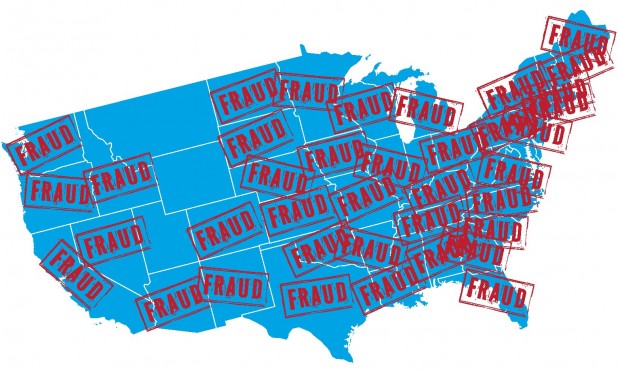Blockchain technology used to fight voter fraud??
Blockchain technology is drawing a lot of interest on this front.
Because a blockchain is a distributed ledger of transactions — in other words, the information it records isn’t stored once in a single system but many times across many independent nodes — it could store votes in an immutable and tamper-proof way. Once a vote has been secured and linked with hashing algorithms and stored across thousands, millions, or perhaps one day billions of nodes, modifying it is theoretically impossible and would require a huge amount of resources and computation power that no single party could effectively bring together.

To use the digital currency analogy, the blockchain model of voting would issue each voter a “wallet” (a user credential) and a single “coin” (one opportunity to vote) and have them cast their vote by transferring their coin to the wallet of their candidate of choice. Voters can only spend their coin — or cast their vote — once, although they would have the flexibility to change their vote before the deadline.
As for security, the decentralized nature of blockchains and the fact that they have no single point of failure makes them extremely resistant to denial of service attacks and other types of threats that are usually conducted against client/server architectures.
Moreover, blockchain-based voting can eliminate some of the fraud scenarios that are possible in paper-based voting systems, such as switching or replacing ballot boxes with fraudulent ones.
Many blockchains currently exist, and a number of these could serve as possible platforms for voting services. Follow My Vote is a Virginia-based startup hoping to move people toward blockchain-based voting. The firm’s platform, based on the BitShares blockchain, will enable voters to cast their votes online using a unique voter ID and their private key; they will use webcams and government-issued IDs to authenticate themselves. The system uses cryptography and end-to-end encryption to keep votes anonymous and immutable. A publicly available ledger will make it viable for everyone to directly follow the results as the election unfolds, and at any stage of the voting process, voters will be able to verify their own votes and make sure they haven’t been modified.

Images: September-2012-TheBlaze-Magazine-Voter-Fraud-Map-620x372.jpg
http://www.cnn.com/videos/tv/2016/09/02/web-sites-spreading-lies-about-voter-fraud.cnn
